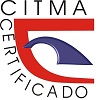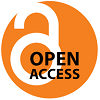Laboratory practice of Power Electronic using the mobile application EveryCircuit
Laboratory practice of Power Electronic using the mobile application EveryCircuit
Keywords:
mobile devices, mobile application, EveryCircuit, educational practice, Power ElectronicsAbstract
Power Electronics is crucial for the training of electrical engineers by providing them with the foundations to analyze and design energy transformation circuits. At the Universidad de Oriente, the scarcity of resources affects the teaching of the subject from the laboratory. The objective of this article is to propose a laboratory practice on uncontrolled rectifiers in the Power Electronics subject, using the mobile application "EveryCircuit", a simulator compatible with Android and iOS. This proposal seeks to integrate mobile simulation into teaching, allowing students to apply theoretical concepts in an interactive and realistic environment. The results show a positive reception and significant improvements in students' understanding and practical skills. This initiative highlights how mobile technology can enrich technical education by taking advantage of the availability of mobile devices to enhance learning in Power Electronics and prepare students for their professional future.
Downloads
Published
How to Cite
Issue
Section
License
Copyright (c) 2024 Ángel Castellano Sanchez, Osmay Santana Ascanio, Bory Bory Prévez

This work is licensed under a Creative Commons Attribution-NonCommercial 4.0 International License.
Horizonte Pedagógico es una revista Open Access, lo que quiere decir que todo su contenido es accesible libremente sin cargo para el lector o su institución. Los usuarios están autorizados a leer, descargar, copiar, distribuir, imprimir, buscar o enlazar a los textos completos de los artículos de esta revista sin permiso previo del editor o del autor, de acuerdo con la definición BOAI de open access. Los autores que publican en esta revista están de acuerdo con los siguientes términos: Los autores conservarán los “Derechos de autor” y garantizan a la revista el derecho de ser la primera publicación del trabajo. La revista se encuentra protegida bajo una licencia internacional de Creative Commons Attribution License Atribución 4.0 Internacional (CC BY NC 4.0), que permite a otros compartir (copiar y redistribuir el material en cualquier medio o formato) y adaptar (remezclar, transformar y construir a partir del material), para cualquier propósito, incluso comercialmente. Bajo las siguientes condiciones: atribución (usted debe dar crédito de manera adecuada, brindar un enlace a la licencia, e indicar si se han realizado cambios y no comercial — Usted no puede hacer uso del material con propósitos comerciales. Puede hacerlo en cualquier forma razonable, pero no de forma tal que sugiera que usted o su uso tienen el apoyo de la revista o el autor de la publicación.






















